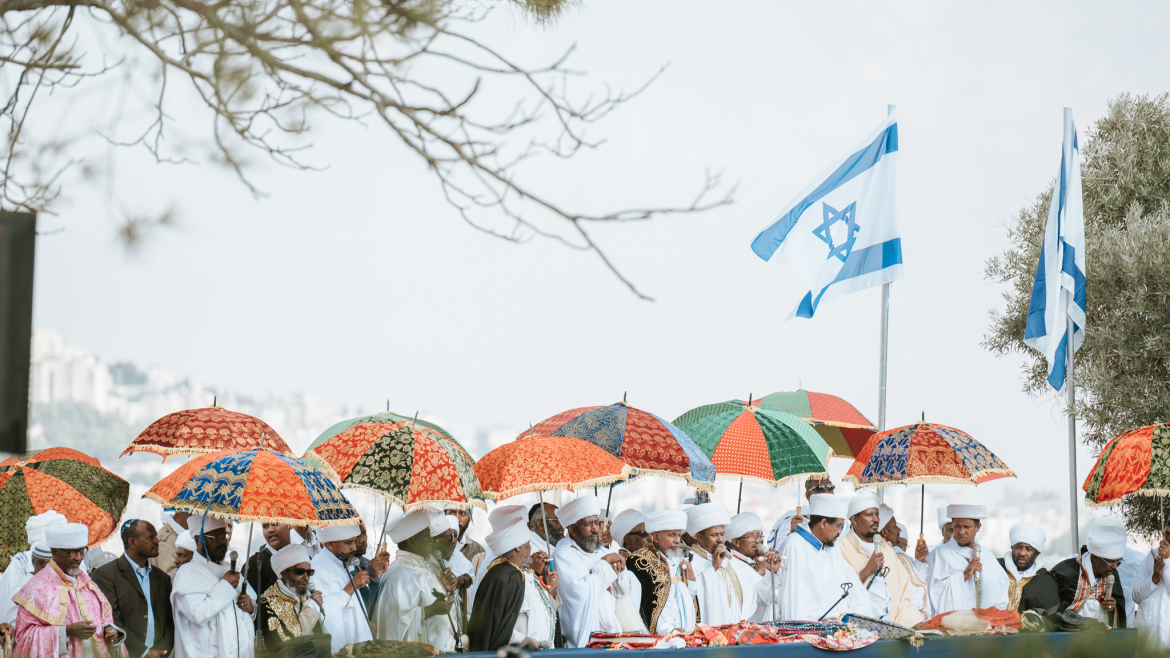By
Published
November 27, 2019
Tags
Tali Ysia walked for two and a half months through the Sudanese desert when she was just four years old. Born in Ethiopia, she and her family journeyed as part of Operation Moses, the effort to get Beta Yisrael, the Jews of Ethiopia, to Israel. Considered to descend from the ancient Israelite Tribe of Dan, the group had lived in isolation from other Jewish communities for millennia. In that time they developed their own customs and celebrations, which they brought with them to their new home. Among these festivals is Sigd, which this year will begin the evening of November 26, with celebrations on the day of the 27. What is the holiday all about? Ysai, an ROI Community member and Schusterman Fellow, offers nine facts as primer.
- The word “Sigd” has the same Amharic root as the word for prostration, with its connotations of worship and belief in God.
- Sigd falls 50 days after Yom Kippur.
- With echoes also of Shavuot, Sigd similarly commemorates the acceptance of the Torah on Mt. Sinai, as well as the later restoration of the Temple in Jerusalem, as chronicled in the Book of Ezra.
- The holiday historically offered Beta Yisrael an opportunity to come together and express their collective yearning to become part of the greater Jewish community and to get to Jerusalem.
- When Beta Yisrael was still in Ethiopia, celebrants would typically place a stone on their backs to symbolize both submission before God and their sins, and to underscore the longing for Zion. Now that they are in Israel—numbering around 150 thousand—this part of the rite is no longer undertaken.
- To commemorate Sigd in Israel, head to Armon Hanatziv, a neighborhood of Jerusalem with a clear view of the Temple Mount, on the holiday. There, the kessim—Beta Yisrael’s religious leaders—read from the books of Exodus, Nechemia and Ezra in Ge’ez, a historically sacred language of the Ethiopian Jewish community. The kessim also confer blessings on the assembled.
- Sigd offers the Ethiopian Jewish community an opportunity to remember and honor those ancestors whose dreams of returning to Zion were not realized, as well as a chance for the community to reunite in celebration of where they are now and to pray for the building of a third Temple.
- The Israeli government recognized Sigd as an official holiday in 2008, which means children now learn about it in school, it’s denoted on calendars, and those who celebrate are able to take a sanctioned day off. For Ysia, part of what makes the holiday meaningful is sharing it with everyone, everywhere. This year, she Skyped with a second grade class in Brooklyn to talk about the Beta Yisrael and the holiday, and last year she traveled to Poland to lead celebrations for a community of Jews there who wanted to learn all about it.
- After the fast, the celebration really begins. People return home for festive meals featuring injera, fuul and other Ethiopian delights.
“It’s amazing how many people didn’t understand what our community sacrificed to get to Israel,” says Ysia. “Sigd opens it up—we invite people to learn and understand.”
She adds, “The holiday is not just for the Ethiopian Jews, it’s for everyone.”
Malcom Sigad Behal! (Happy holiday!)





